- Home
- Barbara W. Tuchman
Stilwell and the American Experience in China, 1911-45
Stilwell and the American Experience in China, 1911-45 Read online
Praise for Stilwell and the American Experience in China, 1911–1945
WINNER 1972 PULITZER PRIZE
“An admirably structured work that is excellent as narrative and fascinating as history…of major importance for the reappraisal, now become essential, of our China policy—and of our Asian policy as a whole…One sees striking parallels between the situation that existed in China during the Stilwell years and that in Southeast Asia today.”
—O. EDMUND CLUBB, Saturday Review
“The most interesting and informative book on U.S.-China relations to appear since World War II…a brilliant, lucid and authentic account of a highly complicated subject that has too long lain buried under the political polemics of ‘how China was lost.’ ”
—ALLEN S. WHITING, The Nation
“This book will be a major protagonist in the continuing controversy about China.”
—JOHN K. FAIRBANK, Director, East Asian Research Center, Harvard University
“Barbara Tuchman’s best book…so large in scope, so crammed with information, so clear in exposition, so assured in tone that one is tempted to say it is not a book but an education.”
—NAOMI BLIVEN, The New Yorker
“An extraordinary book about a truly remarkable soldier…real and moving…certainly deserves reading by all Americans.”
—GENERAL JAMES M. GAVIN
“A characteristically brilliant book. Mrs. Tuchman combines…the precision and grace of a fine writer with the courage to enter a confused and emotionally charged arena.”
—Los Angeles Times
“A superb political study…of the intertwining of Asia and America…a splendid book.”
—THEODORE WHITE
“The American public may well require some fast re-education on the subject of China….Thank goodness, then, for Barbara Tuchman….This book is a brilliant one-volume refresher course.”
—JAMES C. THOMSON, JR., Boston Sunday Herald Traveler
Copyright © 1970, 1971 by Barbara W. Tuchman
All rights reserved.
Published in the United States by Random House, an imprint and division of Penguin Random House LLC, New York.
RANDOM HOUSE and the HOUSE colophon are registered trademarks of Penguin Random House LLC.
Originally published by Macmillan, 1970.
ISBN 9780812986204
Ebook ISBN 9780802986211
Library of Congress Catalog Card Number: 77-135647
randomhousebooks.com
Book design by Simon M. Sullivan, adapted for ebook
Cover design: Gabrielle Bordwin
Cover photograph: William Vandivert/The LIFE Picture Collection/Getty Images
v4.1
a
Contents
Cover
Title Page
Copyright
Maps
Foreword
Prologue: The Crisis
PART ONE 1Foundations of an Officer
2Visitor to Revolution: China, 1911
3The Great War: St. Mihiel and Shantung
4Assignment to Peking: Years of the Warlords, 1920–23
5The “Can Do” Regiment and the Rise of Chiang Kai-shek, 1926–29
6“Vinegar Joe,” 1929–35
7Military Attaché: China’s Last Chance, 1935–37
8Military Attaché: Sino-Japanese War, 1937–39
PART TWO 9The Rush to Prepare, 1939–41
10“I’ll Go Where I’m Sent,” December 1941–February 1942
11“A Hell of a Beating,” March–May 1942
12The Client, June–October 1942
13“Peanut and I on a Raft,” August 1942–January 1943
14The President’s Policy, January–May 1943
15Stilwell Must Go, June–October 1943
16China’s Hour at Cairo, November–December 1943
17The Road Back, December 1943–July 1944
18“The Future of All Asia Is at Stake,” June–September 1944
19The Limits of “Can Do,” September–November 1944
20“We Ought to Get Out—Now,” 1945–46
Photo Insert
Appendix: Road-Building, 1921: Haphazard Conversations, by Major Joseph W. Stilwell
Acknowledgments
Bibliography and Other Sources
Notes
By Barbara W. Tuchman
About the Author
Maps
Maps drawn by Brigadier General Frank Dorn, U.S.A. (Ret.)
China
The Far East
North China and Peking
Stilwell’s travels on land and sea in the 1920s and 30s
Burma, 1942
North Burma, 1944
Foreword
THE THEME of this book is the relation of America to China, in a larger sense to Asia. The vehicle of the theme is the career of General Stilwell. Why Stilwell? Because he combined a career focused on China with background and character that were quintessentially American; because his connection with China spanned the period that shaped the present from the dramatic opening moment of 1911, year of the Revolution, to 1944, decisive year in the decline of the Nationalist Government; because his service in the intervening years was a prism of the times—as language officer from 1920 to 1923 in the time of the warlords, as officer of the 15th Infantry in Tientsin from 1926 to 1929 at the time of the rise to power of Chiang Kai-shek, as Military Attaché from 1935 to 1939 at the time of Japanese invasion, lastly as theater commander in World War II; because in the final and critical years of this period he was the most important figure in the Sino-American relationship. Impatient, acid, impolitic, “Vinegar Joe” was not the ideal man for the role. But in knowledge of the language and country, friendship for the people, belief and persistence in his task, combined with official position and power, he personified the strongest endeavor and, as it was to prove, the tragic limits, of his country’s experience in Asia.
I am conscious of the hazards of venturing into the realm of America’s China policy, a subject that, following the defeat of Chiang Kai-shek by the Communists and the waste of an immense American effort, aroused one of the angriest and most damaging campaigns of vilification in recent public life. Nevertheless, since China is the ultimate reason for our involvement in Southeast Asia, the subject is worth the venture even though the ground is hot. It is only fair to add that this book, which ends in 1946, is concerned with origins that reach back beyond yesterday. “You will hear a lot of talk,” General Stilwell wrote for the graduating class of West Point in 1945, “about how this or that generation messed things up and got us into war. What nonsense. All living generations are responsible for what we do and all dead ones as well.”
—
I should like to add a word of explanation about General Stilwell’s diaries, which were naturally a major source for his biographer. I became thereby a trespasser since the diaries were intended for no eyes but his own. “This little book,” he explicitly warned on the flyleaf of the pocket diary for 1906, “contains None of Your Damned Business!” Believing in the right of privacy, I do not share the view that posterity has some sort of “right” to know the private life of a public figure if he wishes otherwise but in Stilwell’s case the needs of history had already prevailed over privacy. After the war it became important and necessary to let Stilwell’s voice speak for itself about the events of his controversial command. With the consent of his family his wartime diaries and letters for the period 1942–44 only were edited by the former correspondent in China, Theodore White, and published under the title The Stilwell Papers in 1948. The origina
ls together with other wartime documents were also made available to Charles Romanus and Riley Sunderland, authors of the official Army history of the China–Burma–India theater, and were subsequently donated for public use to the Hoover Library in Stanford, California. This decision having been taken, it was logical to give a biographer access to the rest of the Stilwell archive covering his career prior to Pearl Harbor. Mrs. Stilwell made available to me the diaries, letters, documents, scrapbooks, family albums and other material in her possession, hitherto unpublished. These are described further in the Bibliography.
The Stilwell Papers was a sensation and a best seller and has been a source of invaluable fact and enlivening quotation for historians ever since. Yet in this case a man’s own diaries, paradoxically, do not represent the real, or at any rate, the entire, man. Taken alone they give a one-sided view because Stilwell consciously used his diary to vent his “bile,” as he put it, of which he had a large natural endowment augmented by a peculiarly frustrating situation. Not content with diary entries, he rewrote and expanded his notes afterwards in larger notebooks or on loose sheets of paper, all of which he kept. Sometimes the process itself was recorded: “Wrote and wrote. Terrible.” Or, “I am just scribbling to keep from biting the radiator.” All this turmoil, which in other men would have been ephemeral, has become historical record. The acid, which in life was balanced by other qualities, has survived in undue proportion.
—
Finally, I am aware that this book by the nature of its subject does injustice to China and the Chinese people. Because it concentrates, especially in the second half, on a low point in China’s history and on the military function which has never been of high repute in China, the negative aspects predominate. The likableness, the artistic vision and philosophic mind, the strength of character, intelligence, good humor and capacity for work which have put the Chinese in the forefront of the world’s civilized peoples, have not come through in proper proportion. The author can only acknowledge this with regret.
—
Documentation will be found at the back of the book, with the relevant page number and phrase as the indicator.
Detail left
Detail right
Detail left
Detail right
Prologue: The Crisis
IN JULY 1944, at the height of the Second World War, the United States Government officially requested Generalissimo Chiang Kai-shek to place an American, specifically Lieutenant General Joseph W. Stilwell, in command of all China’s armed forces. The proposal was unprecedented: no American had ever before directly commanded the national forces of an ally. It was the more extreme because General Stilwell, already a figure of accomplishment, controversy and feuds in the China–Burma–India theater, was known to be persona non grata to the Generalissimo who had previously asked for his recall.
China’s case, however, was considered “desperate,” demanding “desperate remedies.” To keep China in the war, salvage something of her combat potential and prevent the consolidation of Japan’s hold on the mainland were objects essential to both American strategy and postwar policy. “The future of all Asia is at stake,” President Roosevelt said in his message to Chiang Kai-shek, “along with the tremendous effort which America has expended in that region.” He was fully aware, he added, “of your feelings regarding General Stilwell” but “I know of no other man who has the ability, the force and the determination to offset the disaster that now threatens China.”
A sweeping offensive by the Japanese into hitherto unoccupied China had precipitated the crisis. Launched in April with rapid successes, and advancing implacably against feeble and yielding Chinese defense, it threatened to choke off Free China and overrun the area where American air bases were located. At this stage of the war Japan was on the defensive against the westward American advance across the Pacific and her supply lines by sea were dangerously weakening under American air attack from the bases in south China. The purpose of the Japanese offensive was to wipe out the American airfields, assure a linked-up overland route from Manchuria to Southeast Asia and isolate Free China from contact with a possible American landing on the China coast.
Were these gains to be won, as the enemy’s rapid successes and lack of coordinated Chinese defense indicated they might well be, the war would be prolonged for no one knew how long. Japan could knit together her communications, eliminate a future base of American action and so strengthen her hold on the mainland that her Government might retreat there even if the home islands were lost.
Beyond that a darker prospect loomed. If China collapsed, the whole goal of American policy in the Far East could well be lost. That goal required, after victory, a Chinese nation strong and stable enough to take Japan’s place and keep the peace in the Far East. Far from strong after resistance to invasion that had lasted for seven years, longer than that of any other nation, China was battered and blockaded, its economy ruined by enemy occupation, its Government tired, corrupt and deteriorating. National war effort was paralyzed by fear of the internal challenge of the Communists whose annihilation Chiang Kai-shek had vainly pursued for ten years before a truce in 1937. If his Government should now fall, China would disintegrate in civil strife. Even if the Nationalist Government survived in an area reduced and fragmented by the new Japanese inroads, defeatism and decay from within would be accelerated. In the end, would the ravaged China that emerged from the war be capable of enforcing Japan’s surrender and maintaining her own integrity? If not, who then would be the foundation of stability in Asia?
These were the disturbing questions that shadowed American policy and that by negative outcome could nullify the tremendous effort of the war. The hope of a strong China as one of the four cornerstones of the postwar peace had formed Roosevelt’s policy from the beginning and dictated the effort to sustain China through the war. Military strategy ran parallel. It intended that China’s manpower, not America’s, should fight on the mainland; it needed China’s territory as a base of present air, and future ground, operations; above all, it depended on China’s continued resistance to hold down a million Japanese troops on the mainland. Otherwise they might be released against the Americans’ perilous progress from island to island across the Pacific. The collapse, surrender or collaboration of the Chungking Government, representing the last free nation of the Far East, might induce the other nations of Asia to come to terms with Japan, realizing Roosevelt’s greatest fear. These were the reasons that dictated the long-bedeviled campaign to supply, invigorate and mobilize China and reopen the back door through Burma which had been General Stilwell’s task since Pearl Harbor.
The Government in remote Chungking beyond the gorges of the Yangtze had no plan of defense to stem the Japanese advance. The Generalissimo whose genius was political rather than military had relied for defense on the air power of the American Fourteenth Air Force and the assurance of its confident commander, General Claire Chennault, that if adequately supplied by his countrymen he could contain, even defeat, the Japanese. This program perfectly suited the Generalissimo because it provided him with a surrogate to fight Japan while allowing him to hoard China’s limited military capacity for use against internal enemies. His best divisions were not in action against the Japanese but holding a frontier against the Communist area in the north. Dissidence in other quarters, too, chronically haunted him. Old antagonists among the southern regional commanders, growing restless under the many failings of Chungking, were promoting another of the separatist movements that had long been China’s bane.
Under these pressures Chiang wished neither to risk loyal troops in costly battle against the Japanese nor allow troops of doubtful loyalty to be trained, armed and equipped by the Americans lest some day they be turned against himself. He desperately wanted all the American help in arms, money and supplies that he could get, not for use against the common enemy whom he expected his allies would defeat in any event, but for the purpose which he, as its chief executive, considered mo
st important for his country—survival of the Nationalist regime. This was the web in which he was caught and which fixed the terms of the long-existing struggle between himself and Stilwell.
Stilwell offered no surrogate. He had long maintained that an air force was no better than the ground troops that defended its airfields. The Japanese advance now gave his thesis alarming cogency. His object and assigned mission was to enable the Chinese ground forces to fight efficiently; to so train, arm and equip the Chinese soldier, and assure his pay, food and medical care, as to create an effective military arm. “If I can prove the Chinese soldier is as good as any Allied soldier,” he told a correspondent, “I’ll die happy.” He had proved it could be done by the performance of two Chinese armies under his command in Burma, but his training programs with American instructors and equipment for 60 divisions in China were a ceaseless battle against frustrations and delays, not all of them natural.
To Chiang every unit trained by the Americans was one that loosened his control. He could not reject the program since he was utterly dependent on American aid but he could stall and thwart and divert supplies. For more than two years two unyielding men, equally determined, mutually hostile, supposedly allies, wrestled over the fate of China. Three times Chiang asked or induced others to ask for Stilwell’s recall. Stilwell in his turn despised, as he tactlessly did not conceal, the Generalissimo.
Known with reason as Vinegar Joe, Stilwell was a man of high performance and utter integrity, too quickly disgusted with anything less in others. His particular animus was reserved for persons in high places. He could no more ingratiate himself with someone he did not respect than the dumb could speak. He would have liked to do the job proposed for him if he could have done it without the office. He was already Commanding General of U.S. forces in the CBI theater, Deputy Supreme Allied Commander in Southeast Asia, Commanding General of the Chinese Army in India and its field commander in Burma, nominal Chief of Staff to Chiang Kai-shek for the China theater, chief of the Chinese Training and Combat Command and Administrator of Lend-Lease to China—each of these with its appropriate staffs, pomp and paper work. Since he hated palaver and loathed pretensions, it was understandable that he preferred war in the jungles of Burma among leeches, mildew and outright enemies.

 Practicing History: Selected Essays
Practicing History: Selected Essays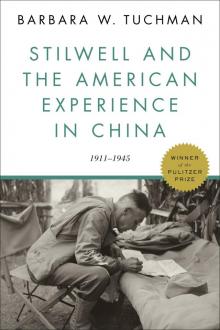 Stilwell and the American Experience in China, 1911-45
Stilwell and the American Experience in China, 1911-45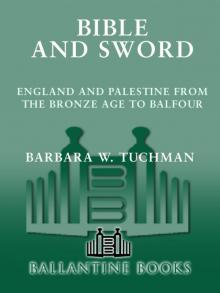 Bible and Sword: England and Palestine From the Bronze Age to Balfour
Bible and Sword: England and Palestine From the Bronze Age to Balfour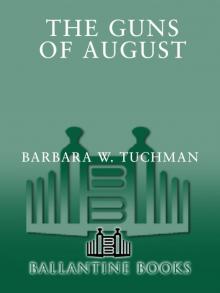 The Guns of August
The Guns of August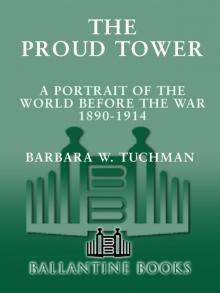 The Proud Tower: A Portrait of the World Before the War, 1890-1914
The Proud Tower: A Portrait of the World Before the War, 1890-1914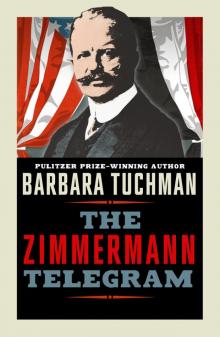 The Zimmermann Telegram
The Zimmermann Telegram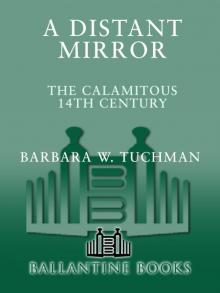 A Distant Mirror: The Calamitous 14th Century
A Distant Mirror: The Calamitous 14th Century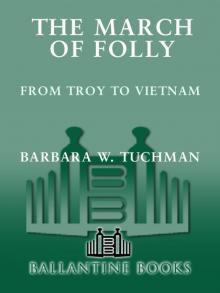 The March of Folly: From Troy to Vietnam
The March of Folly: From Troy to Vietnam The First Salute
The First Salute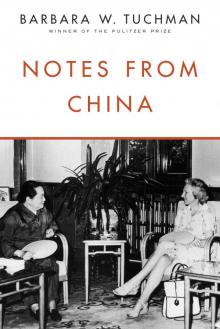 Notes From China
Notes From China Practicing History
Practicing History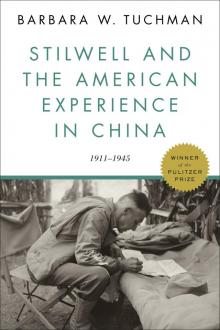 Stilwell and the American Experience in China
Stilwell and the American Experience in China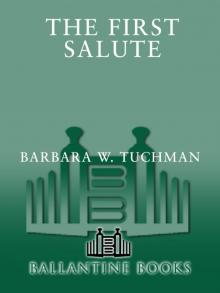 First Salute
First Salute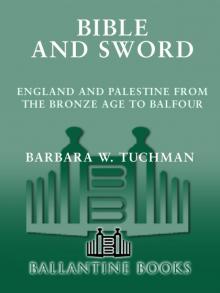 Bible and Sword
Bible and Sword